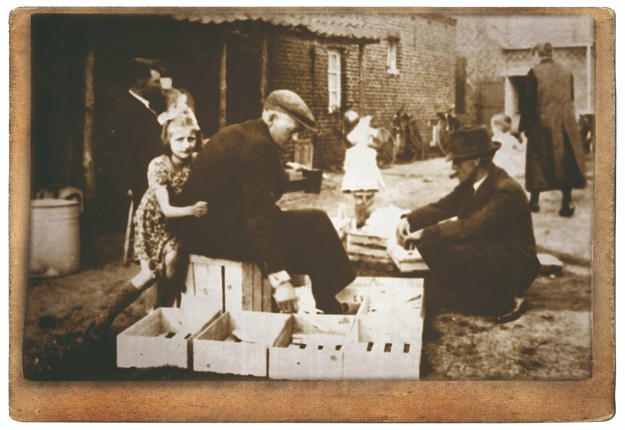Teboza is celebrating its 80th anniversary. This company cultivates asparagus in the Netherlands and, for about the last ten years, in Spain. What started as a mixed farm gradually evolved in the 1980s into the exclusive cultivation of strawberries and asparagus. In 2001, Will Teeuwen, the third generation of the family business, decided to abandon summer strawberries to fully dedicate himself to the “white gold”. “Few companies focus entirely on asparagus. We don’t necessarily want to be the largest, but we want to be the best. Hence the exclusivity,” says Will.
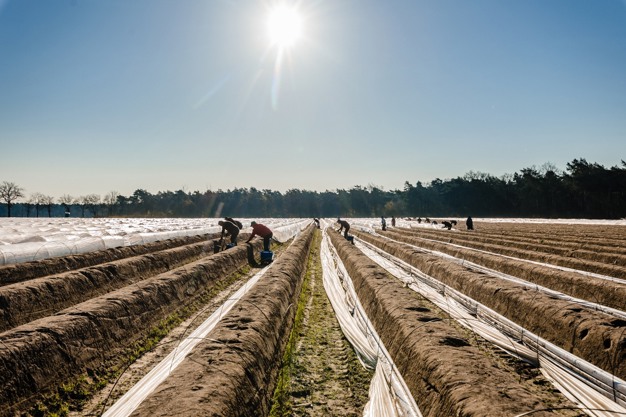
Hello Will. Congratulations on the 80th anniversary of your asparagus production company. When and how did the business begin?
My grandmother, Marie Van Lier, grew up here in Helden in the Netherlands, where our farm is still located. She came from a farming family. When my grandfather, Lodewijk Teeuwen, married her, he moved to 15 Zandberg to run the farm. Asparagus was already a major spring crop—it was the first profitable one—but it wasn’t their only activity. They raised livestock, planted orchards, and harvested field vegetables each year. After WWII, it was a mixed farm supplying nearly all foodstuffs. Asparagus was labor-intensive and not the favorite crop. Labor remains a sector-wide challenge today.
Did you work on the farm as a child?
My father took over the business very early, in 1969. I was born the same year and I remember helping from the age of 10. In spring that meant seven days a week. We’d harvest asparagus in the morning, grab a quick sandwich at midday, sort the spears, and then go to the auction. In the 1980s, the farm was still small by today’s standards. Anyone with five hectares was considered a full-time farmer and could earn a decent living.
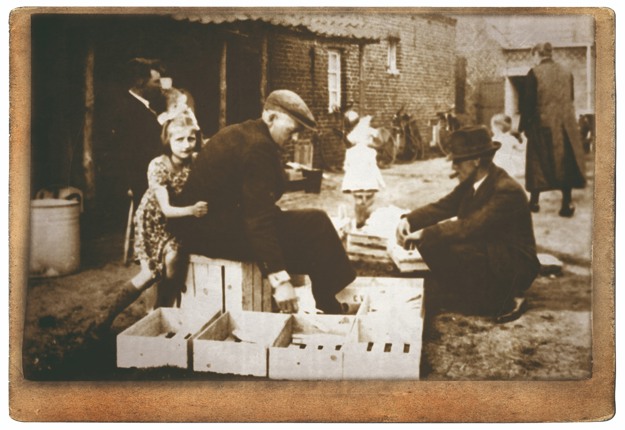
Does a modern asparagus farm need to be five times larger to be profitable?
The dynamics have changed completely. Until around 2015, virtually every asparagus grower made money. That’s no longer the case. Today, organization is much larger, and you must invest heavily in efficiency to maintain margins. Asparagus is not the easiest crop. Specialization is almost mandatory—but it pays off. The recent reduction in cultivated area is mainly because not everyone is automatically profitable with this crop. The days when asparagus growers could survive with the whole family helping in the fields are over. Some regret that the charm of this product has faded in that sense.
When did cultivated areas begin to shrink?
Historically, horticulturists didn’t always produce for the market—and perhaps still don’t. Many gardeners only considered the quantity they could plant and harvest themselves. So around ten years ago, asparagus supply exceeded market demand. Prices dropped, and areas shrank to the point where demand now exceeds supply. Consumption has risen sharply in recent years, partly because supermarkets have run big promotions each season.
But since restarting asparagus cultivation is costly—you need a specific scale and expensive machinery right away—I doubt the area will soon return to its former level. Furthermore, farm succession, climate, stricter environmental standards, and certification demands all impact yields.
An asparagus plant only reaches full production from the third year, right?
Yes. Plant now and you’ll have a small harvest next year—perhaps 25% capacity. The following year, you’ll hit around 70%, and only in the third year will you get full yields. It takes years before you start to make a profit.
Do you replace a certain percentage of your area with new plants each year?
A field lasts about ten years, so to stay in the game, we replace 15% of the area each year. Teboza is still growing, so we don’t just replace asparagus plants. Our current goal is to achieve an early harvest. The earlier customers get a quality product, the smoother sales go when volumes are large. Plus, it’s easier to have a steady supply—even though we can never entirely control it. Weather is decisive: sometimes too cold, sometimes too wet.
Spain, for example, where asparagus is also cultivated, has had a lot of rain this year. Does Teboza grow asparagus there?
We manage two outdoor sites in Andalusia where we grow only green asparagus. Harvest usually starts in February, but this year it was slightly delayed due to persistent rain. Starting in 2026, we plan to harvest in Spain from February to October—eight months. During the other four months, we bridge the gap, and when Spanish supply can’t meet demand, we import from abroad, mainly Mexico and Peru.
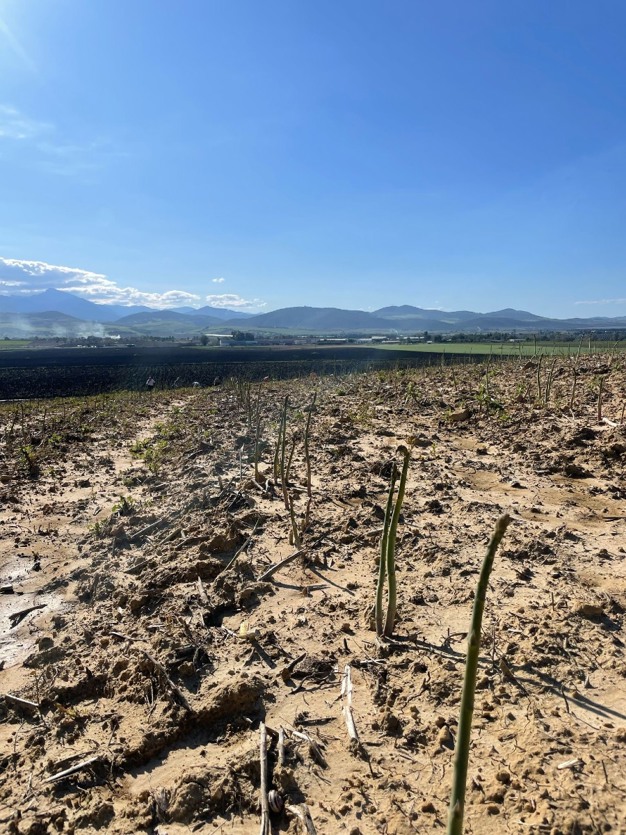
Green asparagus is gaining popularity and is a product we continue to expand. I believe that within our company, its sales will exceed those of white asparagus within five years. One of the upcoming challenges will be meeting the growing demand for green asparagus in particular, as European acreage won’t increase. Spain had enough water this year, but who knows if rainfall in coming years will fill water reservoirs.
Why do you think green asparagus sales might surpass white asparagus?
People eat green asparagus year-round and it’s versatile. It’s increasingly found in salads, for example. Even if white asparagus can be imported from South America or South Africa outside the Dutch season, consumers regard it as a spring product. That’s good—it preserves seasonality. White spears are available for about four to five months, late January from greenhouse, until late June for field-grown.
I’ve read labor is also a problem in Spain. Does that affect you?
In Spain, where we employ locals and migrant workers, wages are rising. That’s quite problematic. It’s also harder to find good soil there than in the Netherlands. In other words, it’s challenging. This year, challenges have been worsened by heavy rain and delayed harvests. Nevertheless, we’re growing rapidly in Spain and confident those investments will soon pay off.
Local growers who visit our plots see that things are heading in the right direction. They ask if they can grow for us. We have people to help them start, so our answer is often positive. However, we ensure we ourselves carry out three-quarters of the cultivation. Controlling the process remains the best guarantee of continuity and quality.
Are your Dutch crops arranged similarly?
In this region of the Netherlands, we have a loyal group of growers—mostly mixed farms—who supply us. That’s been the case for nearly 20 years and it works well. But it’s true that we also carry out most of the cultivation ourselves here too.
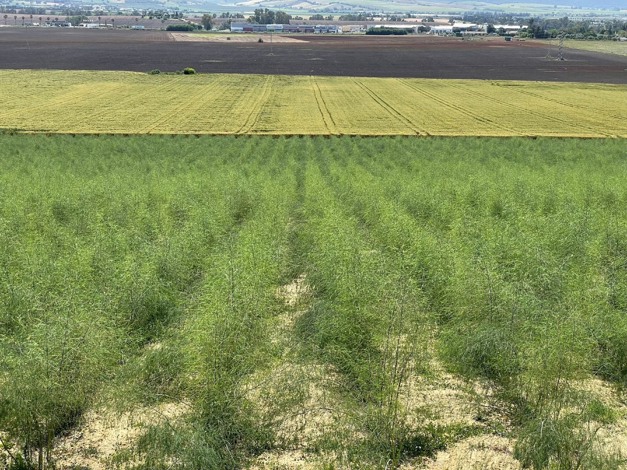
You mentioned labor. Do you use a selective harvester?
Yes. But I must say it still needs adjustment. The date we start using it will depend on this year’s results—but it won’t be long, because robotization is now a necessity. People are increasingly wary of migrant workers and wage pressure is strong. Yet current harvesters still need a lot of labor.
Are you seeking efficiency improvements elsewhere?
We have to do something each year because costs keep increasing. We plan to spend a significant amount on purchasing an even more advanced optical sorting machine to increase capacity and quality. Still, many packing tasks—like neatly placing asparagus on the conveyor belt—are done manually. There’s not yet an automated solution for that.
Do you package your asparagus in paper or plastic?
We mainly supply Dutch and Belgian retailers. The Dutch prefer flowpacks, whereas Belgians want their asparagus in a small tray. Because asparagus has high moisture content, uncoated cardboard packaging is not feasible. I understand the packaging debate, but packaging actually reduces waste. Offering loose asparagus in stores leads to throwing away one-third of it. That has an environmental cost, as you then have to produce one-third more to meet demand. I feel politicians make packaging decisions without consulting the industry enough.

What are Teboza’s biggest current challenges?
We’ve already discussed these: rising costs, climate change, and policy. First is cost increase—especially wages and input prices. These materials must be manufactured, and all sectors face rising labor costs. But it’s not easy to pass these increases on. Second is climate—an issue I wouldn’t have mentioned four years ago. I mean extreme weather conditions hitting all countries today. That forces us to spread our risks by focusing on multiple growing areas and different techniques.
Third, there’s lack of policy coherence and direction. The government seems more concerned with trivial matters than what really matters for horticulture. I hope there will be a turnaround because nothing disrupts entrepreneurs more than inconsistent policy.

For more info
Will Teeuwen
Teboza
Tel: +31 (0) 77 307 1444
w.teeuwen@teboza.nl
www.teboza.com
